Given the below snippet:
import os
import textwrap
from OpenGL.GL import *
from OpenGL.GLU import *
from OpenGL.GLUT import *
from PIL import Image
from OpenGL.GL.ARB.multitexture import *
from OpenGL.extensions import alternate
def get_opengl_info():
return textwrap.dedent("""\
Vendor: {0}
Renderer: {1}
OpenGL Version: {2}
Shader Version: {3}
{4:*^80}
Num Extensions: {5}
{6}
""").format(
glGetString(GL_VENDOR).decode("utf-8"),
glGetString(GL_RENDERER).decode("utf-8"),
glGetString(GL_VERSION).decode("utf-8"),
glGetString(GL_SHADING_LANGUAGE_VERSION).decode("utf-8"),
"OPENGL EXTENSIONS",
glGetIntegerv(GL_NUM_EXTENSIONS),
"\n".join(glGetString(GL_EXTENSIONS).decode("utf-8").split())
)
def create_gl_texture(use_active_texture, channel, width, height, pbits):
id_texture = glGenTextures(1)
if use_active_texture:
glActiveTexture(GL_TEXTURE0 + channel)
glBindTexture(GL_TEXTURE_2D, id_texture)
glPixelStorei(GL_UNPACK_ALIGNMENT, 1)
glTexImage2D(GL_TEXTURE_2D, 0, 3, width, height, 0,
GL_RGBA, GL_UNSIGNED_BYTE, pbits)
glTexParameter(
GL_TEXTURE_2D, GL_TEXTURE_MAG_FILTER, GL_LINEAR)
glTexParameter(
GL_TEXTURE_2D, GL_TEXTURE_MIN_FILTER, GL_LINEAR_MIPMAP_LINEAR)
glTexParameter(GL_TEXTURE_2D, GL_TEXTURE_WRAP_S, GL_REPEAT)
glTexParameter(GL_TEXTURE_2D, GL_TEXTURE_WRAP_T, GL_REPEAT)
glGenerateMipmap(GL_TEXTURE_2D)
return id_texture
def load_texture(use_active_texture, filename, i):
image = Image.open(filename)
ix = image.size[0]
iy = image.size[1]
pbits = image.convert("RGBA").tobytes("raw", "RGBA")
id_texture = create_gl_texture(use_active_texture, i, ix, iy, pbits)
print("Loaded", id_texture)
return id_texture
X_AXIS = 0.0
Y_AXIS = 0.0
Z_AXIS = 0.0
DIRECTION = 1
id_textures = []
def init_gl(Width, Height):
global glMultiTexCoord2f, glActiveTexture
print(get_opengl_info())
print("Choosing between: ", glMultiTexCoord2f.__name__,
glMultiTexCoord2fARB.__name__)
print("Choosing between: ", glActiveTexture.__name__,
glActiveTextureARB.__name__)
glMultiTexCoord2f = alternate(
glMultiTexCoord2f,
glMultiTexCoord2fARB
)
glActiveTexture = alternate(
glActiveTexture,
glActiveTextureARB,
)
print("Selected: ", glMultiTexCoord2f.__name__)
print("Selected: ", glActiveTexture.__name__)
if not glMultiTexCoord2f:
print('Multitexture not supported!')
sys.exit(1)
glClearColor(0.0, 0.0, 0.0, 0.0)
glClearDepth(1.0)
glDepthFunc(GL_LESS)
glEnable(GL_DEPTH_TEST)
glShadeModel(GL_SMOOTH)
glMatrixMode(GL_PROJECTION)
glLoadIdentity()
gluPerspective(45.0, float(Width) / float(Height), 0.1, 100.0)
glMatrixMode(GL_MODELVIEW)
glEnable(GL_TEXTURE_2D)
glTexParameterf(GL_TEXTURE_2D, GL_TEXTURE_MAG_FILTER, GL_NEAREST)
glTexParameterf(GL_TEXTURE_2D, GL_TEXTURE_MIN_FILTER, GL_NEAREST)
glTexEnvf(GL_TEXTURE_ENV, GL_TEXTURE_ENV_MODE, GL_DECAL)
def keyPressed(*args):
if args[0] == "\033":
sys.exit()
# Method0: Using glBindTexture + glTexCoord2f per face
def draw_method_0():
global X_AXIS, Y_AXIS, Z_AXIS
global DIRECTION
global id_textures
glClear(GL_COLOR_BUFFER_BIT | GL_DEPTH_BUFFER_BIT)
glLoadIdentity()
glTranslatef(0.0, 0.0, -6.0)
glRotatef(X_AXIS, 1.0, 0.0, 0.0)
glRotatef(Y_AXIS, 0.0, 1.0, 0.0)
glRotatef(Z_AXIS, 0.0, 0.0, 1.0)
glBindTexture(GL_TEXTURE_2D, id_textures[0])
glBegin(GL_QUADS)
glTexCoord2f(0.0, 0.0)
glVertex3f(-1.0, -1.0, 1.0)
glTexCoord2f(1.0, 0.0)
glVertex3f(1.0, -1.0, 1.0)
glTexCoord2f(1.0, 1.0)
glVertex3f(1.0, 1.0, 1.0)
glTexCoord2f(0.0, 1.0)
glVertex3f(-1.0, 1.0, 1.0)
glEnd()
glBindTexture(GL_TEXTURE_2D, id_textures[1])
glBegin(GL_QUADS)
glTexCoord2f(1.0, 0.0)
glVertex3f(-1.0, -1.0, -1.0)
glTexCoord2f(1.0, 1.0)
glVertex3f(-1.0, 1.0, -1.0)
glTexCoord2f(0.0, 1.0)
glVertex3f(1.0, 1.0, -1.0)
glTexCoord2f(0.0, 0.0)
glVertex3f(1.0, -1.0, -1.0)
glEnd()
glBindTexture(GL_TEXTURE_2D, id_textures[2])
glBegin(GL_QUADS)
glTexCoord2f(0.0, 1.0)
glVertex3f(-1.0, 1.0, -1.0)
glTexCoord2f(0.0, 0.0)
glVertex3f(-1.0, 1.0, 1.0)
glTexCoord2f(1.0, 0.0)
glVertex3f(1.0, 1.0, 1.0)
glTexCoord2f(1.0, 1.0)
glVertex3f(1.0, 1.0, -1.0)
glEnd()
glBindTexture(GL_TEXTURE_2D, id_textures[3])
glBegin(GL_QUADS)
glTexCoord2f(1.0, 1.0)
glVertex3f(-1.0, -1.0, -1.0)
glTexCoord2f(0.0, 1.0)
glVertex3f(1.0, -1.0, -1.0)
glTexCoord2f(0.0, 0.0)
glVertex3f(1.0, -1.0, 1.0)
glTexCoord2f(1.0, 0.0)
glVertex3f(-1.0, -1.0, 1.0)
glEnd()
glBindTexture(GL_TEXTURE_2D, id_textures[4])
glBegin(GL_QUADS)
glTexCoord2f(1.0, 0.0)
glVertex3f(1.0, -1.0, -1.0)
glTexCoord2f(1.0, 1.0)
glVertex3f(1.0, 1.0, -1.0)
glTexCoord2f(0.0, 1.0)
glVertex3f(1.0, 1.0, 1.0)
glTexCoord2f(0.0, 0.0)
glVertex3f(1.0, -1.0, 1.0)
glEnd()
glBindTexture(GL_TEXTURE_2D, id_textures[5])
glBegin(GL_QUADS)
glTexCoord2f(0.0, 0.0)
glVertex3f(-1.0, -1.0, -1.0)
glTexCoord2f(1.0, 0.0)
glVertex3f(-1.0, -1.0, 1.0)
glTexCoord2f(1.0, 1.0)
glVertex3f(-1.0, 1.0, 1.0)
glTexCoord2f(0.0, 1.0)
glVertex3f(-1.0, 1.0, -1.0)
glEnd()
X_AXIS = X_AXIS - 0.030
Z_AXIS = Z_AXIS - 0.030
glutSwapBuffers()
# Method1: Using glActiveTexture+glBindTexture+glMultiTexCoord2f per face
def draw_method_1():
global X_AXIS, Y_AXIS, Z_AXIS
global DIRECTION
global id_textures
glClear(GL_COLOR_BUFFER_BIT | GL_DEPTH_BUFFER_BIT)
glLoadIdentity()
glTranslatef(0.0, 0.0, -6.0)
glRotatef(X_AXIS, 1.0, 0.0, 0.0)
glRotatef(Y_AXIS, 0.0, 1.0, 0.0)
glRotatef(Z_AXIS, 0.0, 0.0, 1.0)
glActiveTexture(GL_TEXTURE0 + 0)
glBindTexture(GL_TEXTURE_2D, id_textures[0])
glBegin(GL_QUADS)
glMultiTexCoord2f(GL_TEXTURE0 + 0, 0.0, 0.0)
glVertex3f(-1.0, -1.0, 1.0)
glMultiTexCoord2f(GL_TEXTURE0 + 0, 1.0, 0.0)
glVertex3f(1.0, -1.0, 1.0)
glMultiTexCoord2f(GL_TEXTURE0 + 0, 1.0, 1.0)
glVertex3f(1.0, 1.0, 1.0)
glMultiTexCoord2f(GL_TEXTURE0 + 0, 0.0, 1.0)
glVertex3f(-1.0, 1.0, 1.0)
glEnd()
glActiveTexture(GL_TEXTURE0 + 1)
glBindTexture(GL_TEXTURE_2D, id_textures[1])
glBegin(GL_QUADS)
glMultiTexCoord2f(GL_TEXTURE0 + 1, 1.0, 0.0)
glVertex3f(-1.0, -1.0, -1.0)
glMultiTexCoord2f(GL_TEXTURE0 + 1, 1.0, 1.0)
glVertex3f(-1.0, 1.0, -1.0)
glMultiTexCoord2f(GL_TEXTURE0 + 1, 0.0, 1.0)
glVertex3f(1.0, 1.0, -1.0)
glMultiTexCoord2f(GL_TEXTURE0 + 1, 0.0, 0.0)
glVertex3f(1.0, -1.0, -1.0)
glEnd()
glActiveTexture(GL_TEXTURE0 + 2)
glBindTexture(GL_TEXTURE_2D, id_textures[2])
glBegin(GL_QUADS)
glMultiTexCoord2f(GL_TEXTURE0 + 2, 0.0, 1.0)
glVertex3f(-1.0, 1.0, -1.0)
glMultiTexCoord2f(GL_TEXTURE0 + 2, 0.0, 0.0)
glVertex3f(-1.0, 1.0, 1.0)
glMultiTexCoord2f(GL_TEXTURE0 + 2, 1.0, 0.0)
glVertex3f(1.0, 1.0, 1.0)
glMultiTexCoord2f(GL_TEXTURE0 + 2, 1.0, 1.0)
glVertex3f(1.0, 1.0, -1.0)
glEnd()
glActiveTexture(GL_TEXTURE0 + 3)
glBindTexture(GL_TEXTURE_2D, id_textures[3])
glBegin(GL_QUADS)
glMultiTexCoord2f(GL_TEXTURE0 + 3, 1.0, 1.0)
glVertex3f(-1.0, -1.0, -1.0)
glMultiTexCoord2f(GL_TEXTURE0 + 3, 0.0, 1.0)
glVertex3f(1.0, -1.0, -1.0)
glMultiTexCoord2f(GL_TEXTURE0 + 3, 0.0, 0.0)
glVertex3f(1.0, -1.0, 1.0)
glMultiTexCoord2f(GL_TEXTURE0 + 3, 1.0, 0.0)
glVertex3f(-1.0, -1.0, 1.0)
glEnd()
glActiveTexture(GL_TEXTURE0 + 4)
glBindTexture(GL_TEXTURE_2D, id_textures[4])
glBegin(GL_QUADS)
glMultiTexCoord2f(GL_TEXTURE0 + 4, 1.0, 0.0)
glVertex3f(1.0, -1.0, -1.0)
glMultiTexCoord2f(GL_TEXTURE0 + 4, 1.0, 1.0)
glVertex3f(1.0, 1.0, -1.0)
glMultiTexCoord2f(GL_TEXTURE0 + 4, 0.0, 1.0)
glVertex3f(1.0, 1.0, 1.0)
glMultiTexCoord2f(GL_TEXTURE0 + 4, 0.0, 0.0)
glVertex3f(1.0, -1.0, 1.0)
glEnd()
glActiveTexture(GL_TEXTURE0 + 5)
glBindTexture(GL_TEXTURE_2D, id_textures[5])
glBegin(GL_QUADS)
glMultiTexCoord2f(GL_TEXTURE0 + 5, 0.0, 0.0)
glVertex3f(-1.0, -1.0, -1.0)
glMultiTexCoord2f(GL_TEXTURE0 + 5, 1.0, 0.0)
glVertex3f(-1.0, -1.0, 1.0)
glMultiTexCoord2f(GL_TEXTURE0 + 5, 1.0, 1.0)
glVertex3f(-1.0, 1.0, 1.0)
glMultiTexCoord2f(GL_TEXTURE0 + 5, 0.0, 1.0)
glVertex3f(-1.0, 1.0, -1.0)
glEnd()
X_AXIS = X_AXIS - 0.030
Z_AXIS = Z_AXIS - 0.030
glutSwapBuffers()
# Method2: Using glActiveTexture+glBindTexture+glTexCoord2f per face
def draw_method_2():
global X_AXIS, Y_AXIS, Z_AXIS
global DIRECTION
global id_textures
glClear(GL_COLOR_BUFFER_BIT | GL_DEPTH_BUFFER_BIT)
glLoadIdentity()
glTranslatef(0.0, 0.0, -6.0)
glRotatef(X_AXIS, 1.0, 0.0, 0.0)
glRotatef(Y_AXIS, 0.0, 1.0, 0.0)
glRotatef(Z_AXIS, 0.0, 0.0, 1.0)
glActiveTexture(GL_TEXTURE0 + 0)
glBindTexture(GL_TEXTURE_2D, id_textures[0])
glBegin(GL_QUADS)
glTexCoord2f(0.0, 0.0)
glVertex3f(-1.0, -1.0, 1.0)
glTexCoord2f(1.0, 0.0)
glVertex3f(1.0, -1.0, 1.0)
glTexCoord2f(1.0, 1.0)
glVertex3f(1.0, 1.0, 1.0)
glTexCoord2f(0.0, 1.0)
glVertex3f(-1.0, 1.0, 1.0)
glEnd()
glActiveTexture(GL_TEXTURE0 + 1)
glBindTexture(GL_TEXTURE_2D, id_textures[1])
glBegin(GL_QUADS)
glTexCoord2f(1.0, 0.0)
glVertex3f(-1.0, -1.0, -1.0)
glTexCoord2f(1.0, 1.0)
glVertex3f(-1.0, 1.0, -1.0)
glTexCoord2f(0.0, 1.0)
glVertex3f(1.0, 1.0, -1.0)
glTexCoord2f(0.0, 0.0)
glVertex3f(1.0, -1.0, -1.0)
glEnd()
glActiveTexture(GL_TEXTURE0 + 2)
glBindTexture(GL_TEXTURE_2D, id_textures[2])
glBegin(GL_QUADS)
glTexCoord2f(0.0, 1.0)
glVertex3f(-1.0, 1.0, -1.0)
glTexCoord2f(0.0, 0.0)
glVertex3f(-1.0, 1.0, 1.0)
glTexCoord2f(1.0, 0.0)
glVertex3f(1.0, 1.0, 1.0)
glTexCoord2f(1.0, 1.0)
glVertex3f(1.0, 1.0, -1.0)
glEnd()
glActiveTexture(GL_TEXTURE0 + 3)
glBindTexture(GL_TEXTURE_2D, id_textures[3])
glBegin(GL_QUADS)
glTexCoord2f(1.0, 1.0)
glVertex3f(-1.0, -1.0, -1.0)
glTexCoord2f(0.0, 1.0)
glVertex3f(1.0, -1.0, -1.0)
glTexCoord2f(0.0, 0.0)
glVertex3f(1.0, -1.0, 1.0)
glTexCoord2f(1.0, 0.0)
glVertex3f(-1.0, -1.0, 1.0)
glEnd()
glActiveTexture(GL_TEXTURE0 + 4)
glBindTexture(GL_TEXTURE_2D, id_textures[4])
glBegin(GL_QUADS)
glTexCoord2f(1.0, 0.0)
glVertex3f(1.0, -1.0, -1.0)
glTexCoord2f(1.0, 1.0)
glVertex3f(1.0, 1.0, -1.0)
glTexCoord2f(0.0, 1.0)
glVertex3f(1.0, 1.0, 1.0)
glTexCoord2f(0.0, 0.0)
glVertex3f(1.0, -1.0, 1.0)
glEnd()
glActiveTexture(GL_TEXTURE0 + 5)
glBindTexture(GL_TEXTURE_2D, id_textures[5])
glBegin(GL_QUADS)
glTexCoord2f(0.0, 0.0)
glVertex3f(-1.0, -1.0, -1.0)
glTexCoord2f(1.0, 0.0)
glVertex3f(-1.0, -1.0, 1.0)
glTexCoord2f(1.0, 1.0)
glVertex3f(-1.0, 1.0, 1.0)
glTexCoord2f(0.0, 1.0)
glVertex3f(-1.0, 1.0, -1.0)
glEnd()
X_AXIS = X_AXIS - 0.030
Z_AXIS = Z_AXIS - 0.030
glutSwapBuffers()
def load_textures(use_active_texture):
global id_textures
id_textures.append(load_texture(use_active_texture, "tex00.jpg", 0))
id_textures.append(load_texture(use_active_texture, "tex01.jpg", 1))
id_textures.append(load_texture(use_active_texture, "tex02.jpg", 2))
id_textures.append(load_texture(use_active_texture, "tex03.jpg", 3))
id_textures.append(load_texture(use_active_texture, "tex04.jpg", 4))
id_textures.append(load_texture(use_active_texture, "tex05.jpg", 5))
def main():
glutInit(sys.argv)
glutInitDisplayMode(GLUT_RGBA | GLUT_DOUBLE | GLUT_ALPHA | GLUT_DEPTH)
glutInitWindowSize(640, 480)
glutInitWindowPosition(200, 200)
glutCreateWindow(b'OpenGL Python Textured Cube')
init_gl(640, 480)
current_method = 2
draw_methods = {
0: {"f": draw_method_0, "use_active_texture": False},
1: {"f": draw_method_1, "use_active_texture": True},
2: {"f": draw_method_2, "use_active_texture": True}
}
draw = draw_methods[current_method]["f"]
load_textures(draw_methods[current_method]["use_active_texture"])
glutDisplayFunc(draw)
glutIdleFunc(draw)
glutKeyboardFunc(keyPressed)
glutMainLoop()
if __name__ == "__main__":
main()
If i set current_method=0 I'll get the output I expect, all cube faces will use a different texture (as intended):
If i set current_method=1 only one face will be textured properly, that's a wrong output:
If i set current_method=2 all faces will be textured with the same texture[0], which is also a wrong output:
I'd like to understand why methods 1 & 2 are not giving the same output as method 0. I know when using shaders using glActiveTexture properly becomes trivial but I'd like to understand what's wrong when using these methods on the old fixed pipeline.


